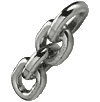
The Cab Forward design was widely used by the Southern Pacific Railroad to deal with the peculiar problems on some of its routes.
The Sacramento division of the Southern Pacific had close to 150 miles of grades of up to 2.5 percent.
As trains grew in length, more powerful locomotives were required.
In 1908, Southern Pacific ordered two 2-8-8-2 conventional Mallets classified MC-1 (Mallet-Consolidation) numbered 4000 and 4001.
On an uphill trial run two problems became evident.
The stack exhaust velocity was so great that it blew the roof boards off the snow sheds.
This was easily handled by installing "stack splitters" (a deflector located above the smoke stack which directed the exhaust to the sides).
The second problem was that the great volume of exhaust gasses almost asphyxiated the crew.
This was a major problem on routes like the climb to Tehachapi with all of its tunnels.
A team of Southern Pacific design engineers came up with a plan and designs for a mallet with the cab in front, classified MC-2.
The Southern Pacific Cab Forward placed the cab at the front by turning the entire locomotive, minus the tender, by 180 degrees.
This arrangement was made possible by burning fuel oil instead of coal.
The advantage in visibility was tremendous and the exhaust fumes were behind the cab making it easier for the crew to breath.
Southern Pacific had Baldwin build 15 without testing one.
Numbered 4002-4016, they were delivered in February and March of 1910.
The engineer's and fireman's controls were shifted to opposite sides of the cab so that when run "backwards" the crew was on the usual side of the track.
Baldwin Locomotive Works built 256 Cab Forward locomotives for SP over the next 46 years, the only American railroad to make extensive use of this design.
Wheel arrangements for these oil-burning behemoths were 2-6-6-2 (changed to 4-6-6-2 after a serious derailment), 2-8-8-2, and 4-8-8-2.
These locomotives saw service on the Tehachapi Mountains, the Shasta Division, the Modoc route, the Sierra Nevada's, and other parts of the SP system.
One example of the type, Southern Pacific 4294, is kept at the California State Railroad Museum in Sacramento, California.
It is a 4-8-8-2 locomotive and is the only one to escape being scrapped.
Engine 4294 was part of SP's AC-12 class (Articulated Consolidation type, 12th series group) locomotives, the last new steam locomotives acquired by the company.
Ed Gordon.
provisions in Section 29 of the Canadian
Copyright Modernization Act.










